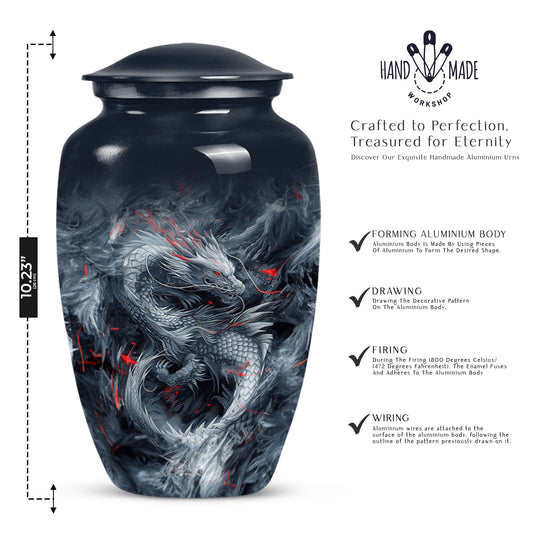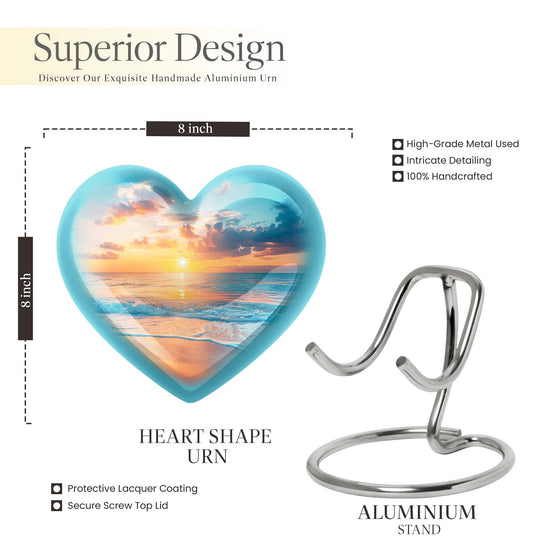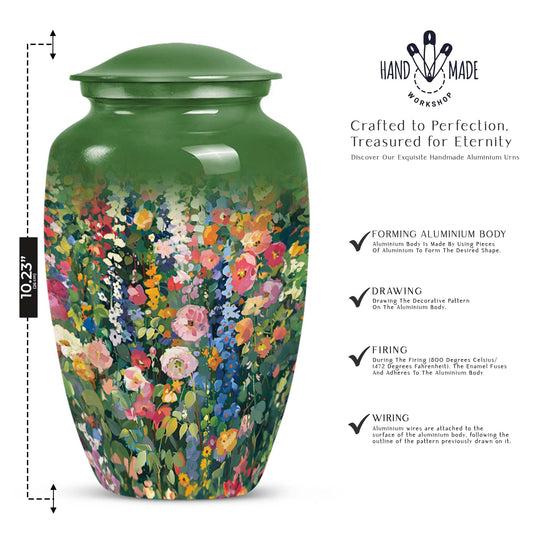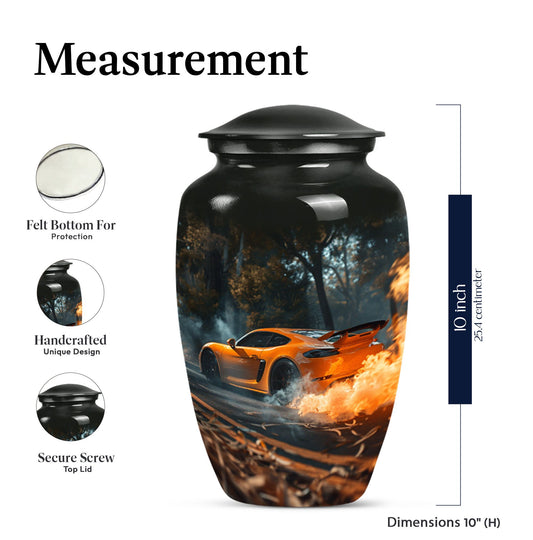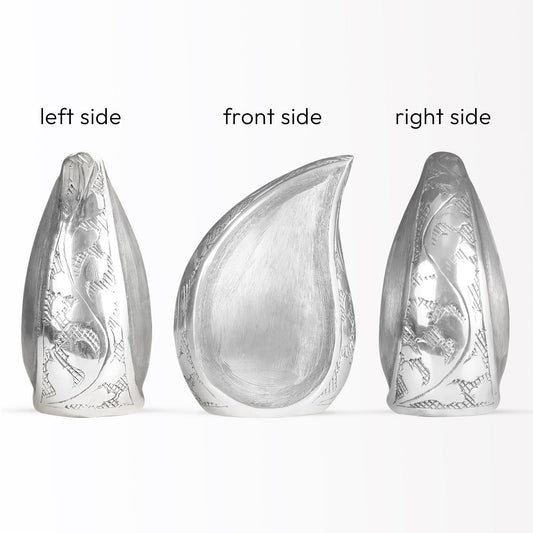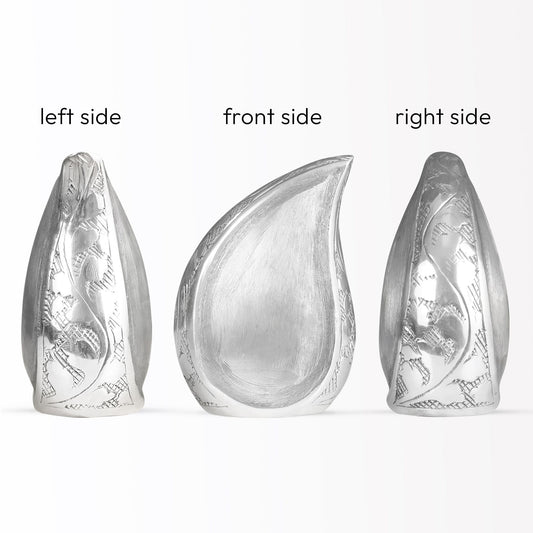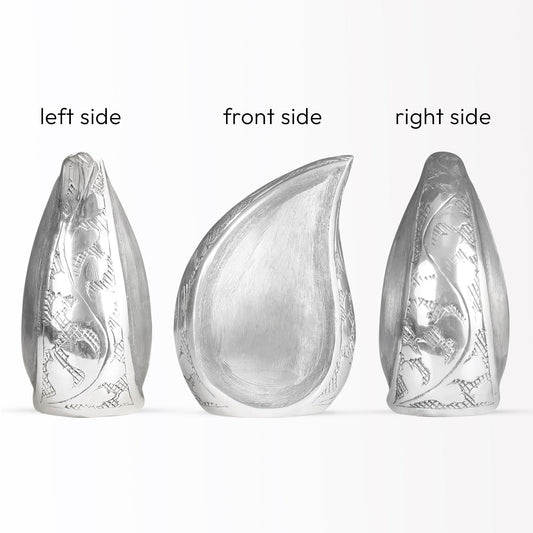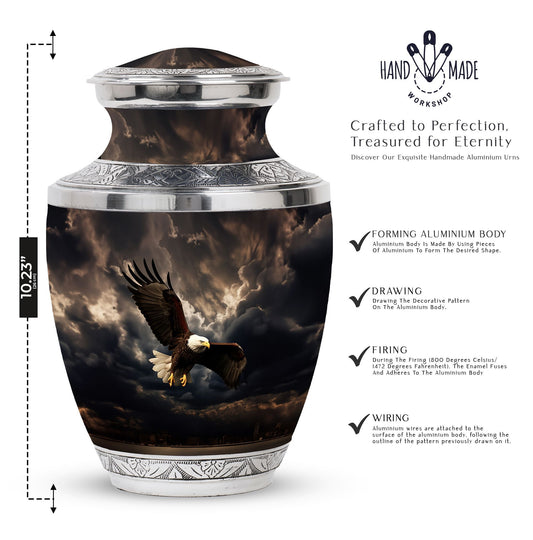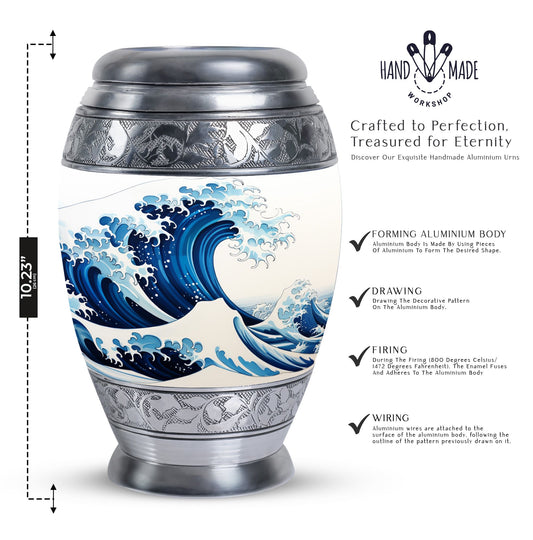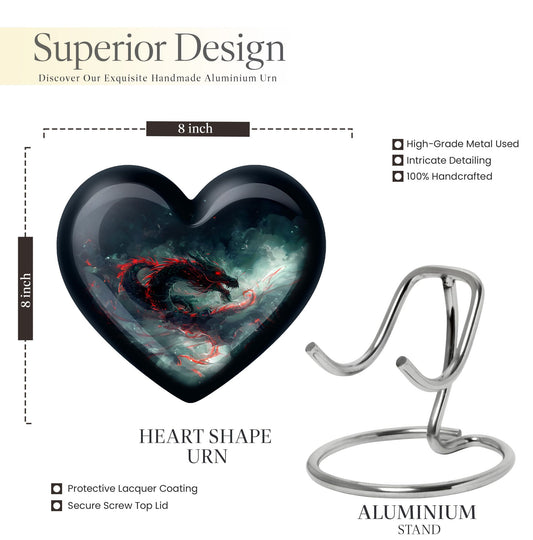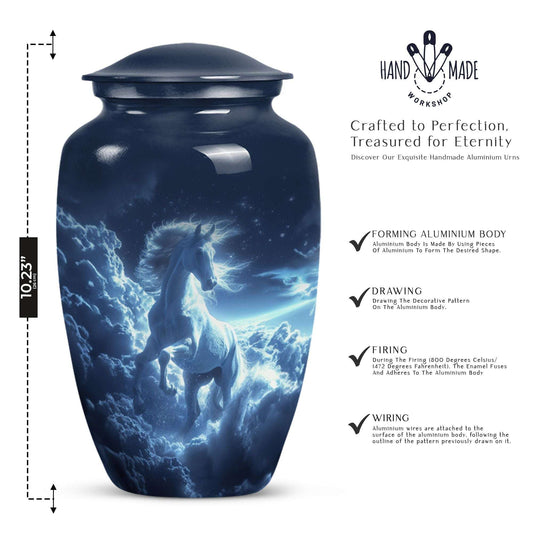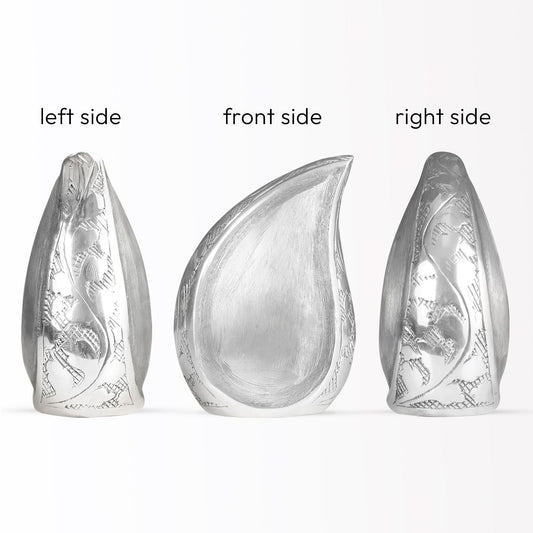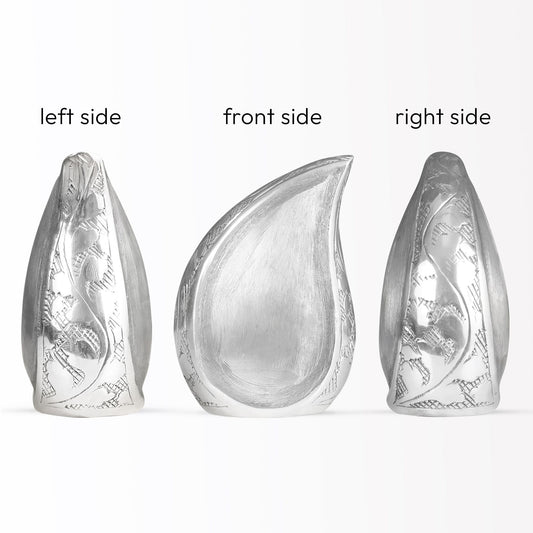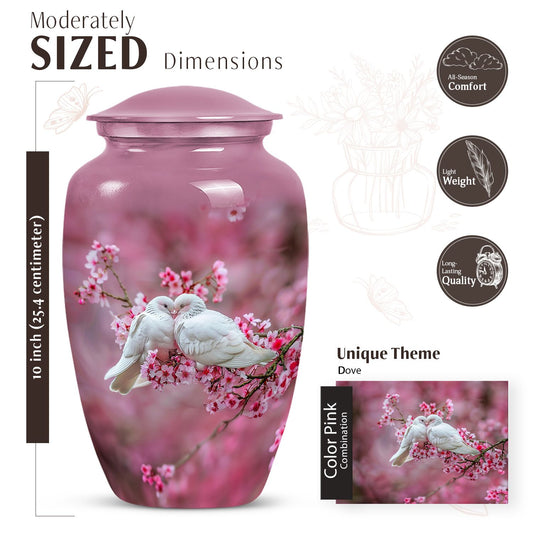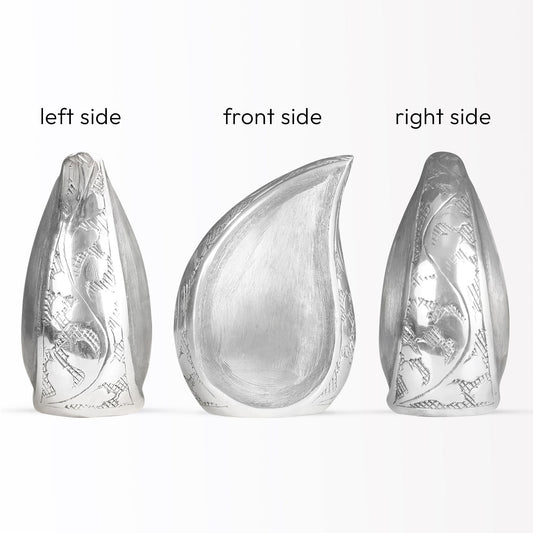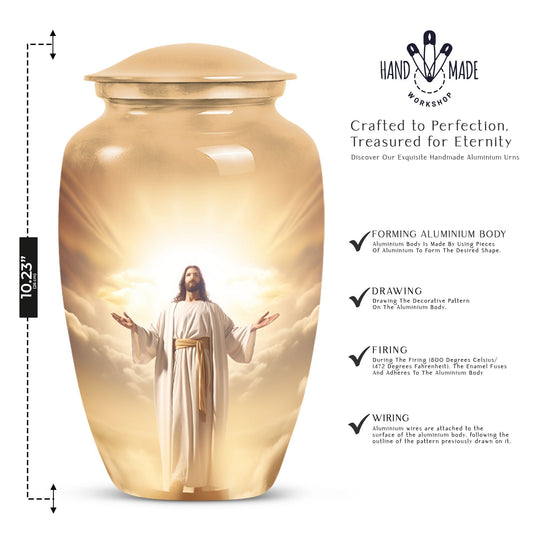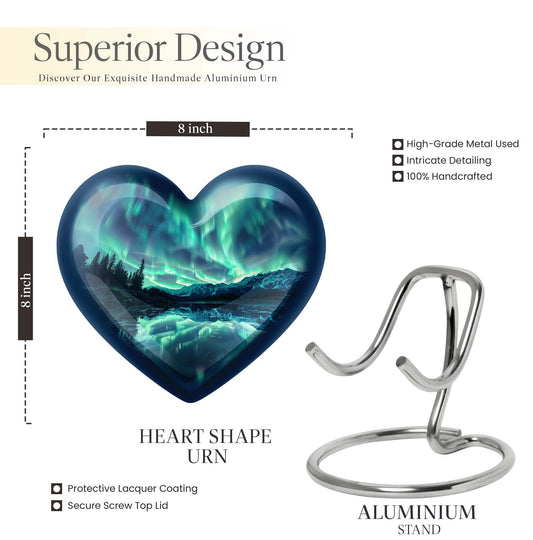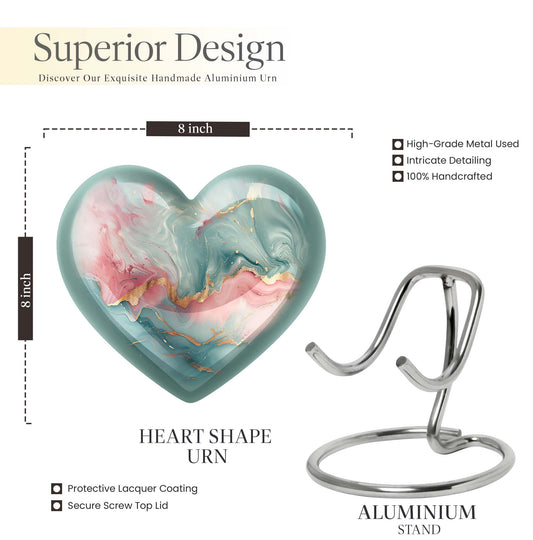Popular Urns
Funeral vs Memorial vs Burial: Understanding the Key Differences and Traditions

When a loved one passes away, families are often faced with many decisions—one of the most important being how to honor and remember the departed. While the terms funeral, memorial, and burial are sometimes used interchangeably, they refer to different ceremonies and practices. Each serves a unique purpose and offers different ways to provide closure, celebrate life, and begin the grieving process.
In this blog, we’ll explore the differences between funeral, memorial, and burial, the significance of each, and how they can be customized to reflect cultural, religious, and personal beliefs.
What is a Funeral?
A funeral is a formal service held to honor a deceased person, typically taking place shortly after death and often including the body in a casket. Funerals usually follow a structured format and may include religious rites, readings, eulogies, and music.
Key Features of a Funeral Service:
- The body is present (viewing or closed casket).
- Takes place before cremation or burial.
- Often held in a church, funeral home, or cemetery chapel.
- Includes prayers, rituals, and speeches.
- May end with a burial or cremation ceremony.
What is a Memorial?
A memorial service is a ceremony that honors the deceased without the body present. Memorials can occur days, weeks, or even months after the death. They offer more flexibility and are often seen as a celebration of life.
Key Features of a Memorial Service:
- The body is not present.
- Can be held at any location—home, park, event hall.
- Usually occurs after cremation or burial.
- Often more casual and personal.
- Includes photos, stories, videos, and personal tributes.
What is a Burial?
Burial is the physical act of placing the body or ashes into the ground or a burial vault or a cremation urn . It can occur as part of a funeral service or separately and may follow a religious or cultural tradition.
Key Features of a Burial:
- Occurs after a funeral or memorial.
- Involves a graveside service or interment.
- May include family and close friends.
- Can be part of a green burial or traditional burial plot.
Funeral vs Memorial: What’s the Difference?
The main difference between a funeral and a memorial service is the presence of the body. A funeral includes the body, often in a casket, and is usually held before cremation or burial. A memorial service does not include the body and is typically held after burial or cremation.
| Feature | Funeral | Memorial |
|---|---|---|
| Body Present | Yes | No |
| Timing | Within days of death | Days to months later |
| Location | Funeral home, church | Flexible (park, hall, home) |
| Tone | Formal | Can be informal or celebratory |
Funeral vs Burial: What’s the Connection?
Many people ask, “Is a funeral the same as a burial?” The answer is no. A funeral is the service, and a burial is the final disposition of the body. The burial may immediately follow the funeral service or take place separately.
Examples:
- A traditional funeral and burial includes a church service followed by burial at a cemetery.
- A funeral with cremation might conclude with a later memorial or scattering of ashes.
Memorial vs Burial: Understanding Their Roles
A memorial service and a burial service can both happen without a funeral. For example, someone might be cremated first, followed by a memorial service and later an ash burial or scattering ceremony.
These services are typically more customizable and can be held when family members are available to attend.
FAQs: Funeral vs Memorial vs Burial
Is a memorial and funeral the same thing?
No, a memorial is different from a funeral. A funeral includes the body and is typically held shortly after death, while a memorial occurs without the body and may take place at a later time.
How soon after death is a memorial?
A memorial service can be held any time after death, from a few days to several months later. This flexibility allows families time to plan and gather loved ones.
What comes first, a memorial or a funeral?
Typically, the funeral comes first, especially if it includes the body. The memorial can be held afterward, particularly if the funeral is private and the memorial is open to the community.
What happens at a memorial service?
At a memorial service, family and friends gather to honor the deceased through tributes, speeches, music, photos, and shared memories. There is no casket, making the tone often more celebratory.
Which One Should You Choose?
Choosing between a funeral, memorial, and burial depends on personal, religious, and financial factors. Here are a few things to consider:
Choose a Funeral If:
- You want a traditional service.
- The family prefers a religious ritual with the body present.
- You plan to have a burial or cremation immediately after.
Choose a Memorial If:
- You’re planning a celebration of life.
- The body has already been cremated or buried.
- You want more flexibility in location and timing.
Choose a Burial If:
- You or your family prefer traditional burial over cremation.
- You want a physical gravesite for remembrance.
- The deceased left specific burial instructions.
Final Thoughts
Understanding the difference between a funeral, memorial, and burial helps families make informed and meaningful decisions when honoring a loved one. Whether it’s the solemnity of a traditional funeral, the flexibility of a memorial, or the finality of a burial, each service offers an opportunity for remembrance and healing.
With thoughtful planning, these ceremonies provide comfort and connection in times of grief.







